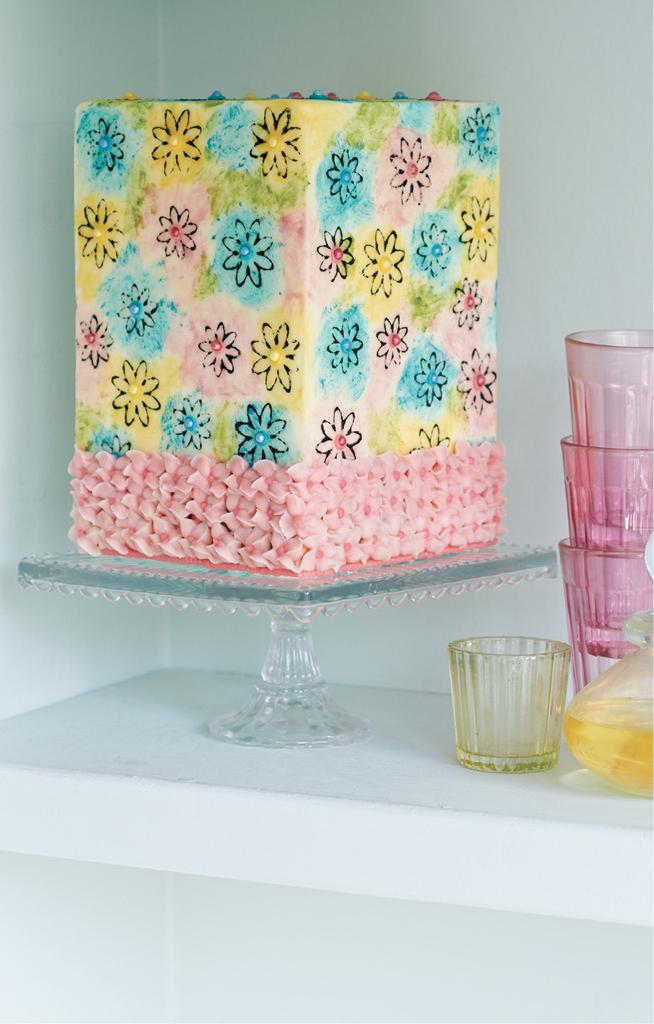The Contemporary Buttercream Bible (32 page)
Read The Contemporary Buttercream Bible Online
Authors: Christina Ong Valeri Valeriano

A
2 Cover your cake with a smooth finish (see
Covering Cakes in Buttercream Basics) then put it
in the fridge to chill until the surface is hard enough for you to hold the stencil against it without it
sticking. This will make it easier for you to work on the cake. Position and hold the stencil on to the
cake firmly then squeeze the thinned buttercream
on top of the stencil (B).
367
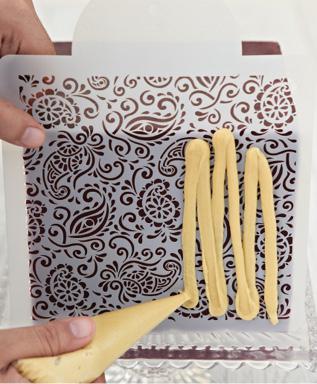
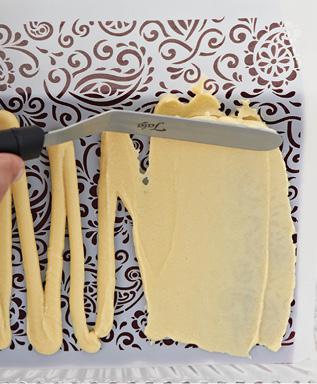
B
3 Use a palette knife to level out the buttercream
and to take off the excess (C).
368
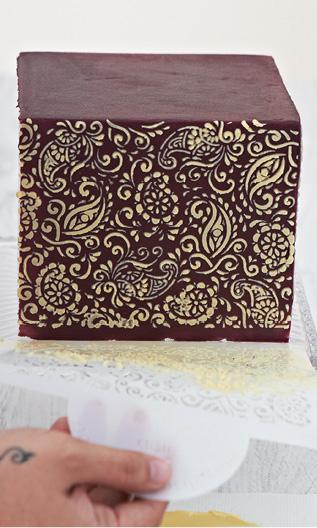
C
4 Since the background buttercream is cold, wait
until the thinned buttercream firms up a little
before gently pulling the stencil away (D). Repeat
the same process on the other sides of your cake.
D
369
Tip
It is best to wait for a few seconds to a minute
until the design has hardened before you pull
away the stencil to avoid smudging.
370
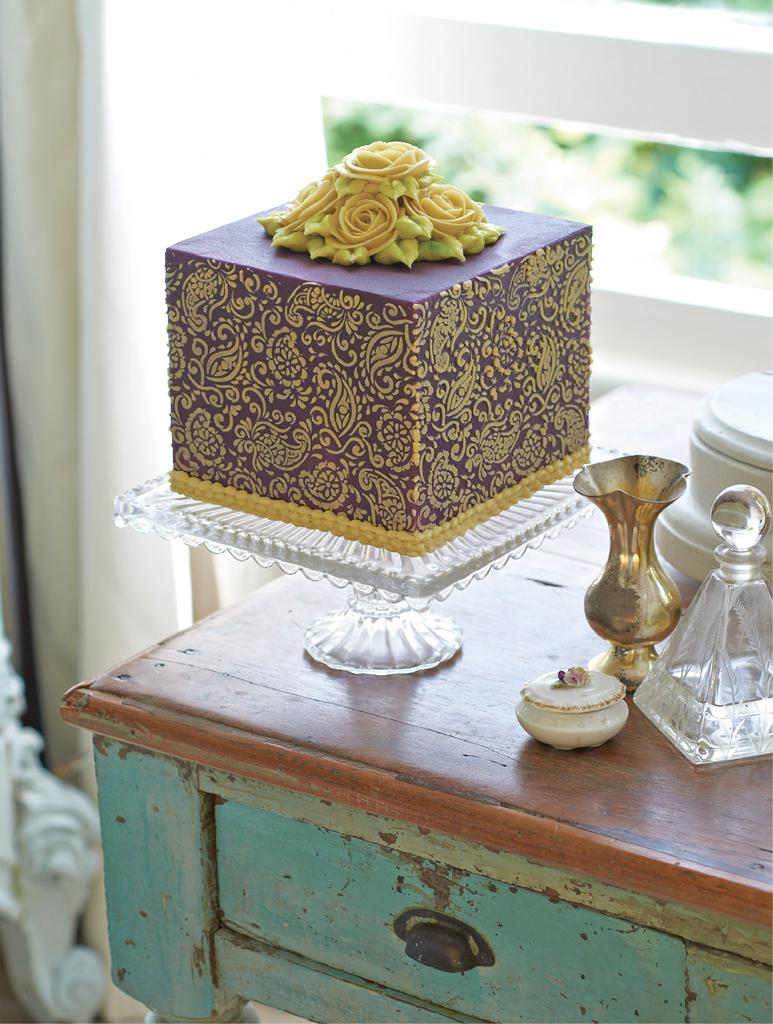
To create this cake…
• 15 × 15cm (6 × 6in) square cake
• 1.35–1.75kg (3lb 2oz–3lb 14oz) buttercream
371
• Paste colours: purple (Sugarflair Lilac), beige
(Sugarflair
Caramel),
light
green
(Sugarflair
Eucalyptus)
• Stencil
• Piping bags
• Palette knife
• Scissors
• Small leaf nozzle (Wilton 352)
• Small petal nozzle (Wilton 104)
• Cake stand or covered cake board
Crumb coat (see Crumb Coating in Buttercream
Basics) and place the cake on a stand or covered
board. Cover the cake with a smooth finish (see
Smoothing in Buttercream Basics) using 600–800g
(1lb 5oz–1lb 12oz) of purple buttercream. Colour
the remaining buttercream in the following
quantities: 600–700g (1lb 5oz–1lb 9oz) beige and
150–250g (51⁄2–9oz) light green. Use the beige
buttercream to create the stencil pattern on all four sides of the cake, following the tutorial. Pipe roses on the top in beige (see Rose and Rose Bud in
Piping Flowers), lifting them into position with
scissors, and add leaves in a mixture of beige and
372
teal (see Sunflower and Leaves in Piping Flowers).
Pipe a bottom border of shells (see Shells and
Fleur-de-lis in Piping Pattens and Textures) using
beige buttercream in a piping bag with the tip
snipped off.
373
Sponging and Stamping
Stamping has always been used in a wide variety of
popular crafts to add a repeating pattern onto a
surface. It’s a technique that lends itself well to cake decorating. In our version, we take the blank canvas
of a cake and, using just an ordinary sponge and
different colours, we create a vibrant background
that can be enhanced using small tools like cookie
cutters, plungers or rubber stamps, pressed into the
surface of the cake.
1 Tint buttercream in different colours, put into
separate bowls and ‘thin’ them by adding drops of
water to achieve a runny consistency (A). One of the
colours should be black, or at least dark, so that it can be used for the actual stamping and will show
up well against the background.
374
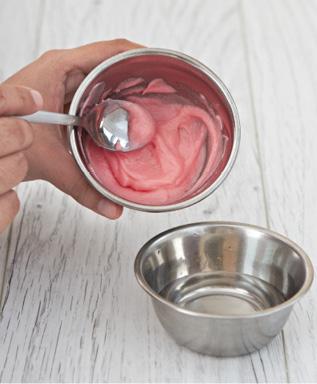
A
2 Cut a clean sponge into small squares and dip one
in one of the bowls of thinned buttercream (B).
Gently pat on smoothed surface of the cake. Use a
different sponge in each colour, and make sure that
before you apply the colours to the cake, you
remove the excess buttercream. Repeat process
until cake is covered with different colour patches,
except your black or dark buttercream (C).
375
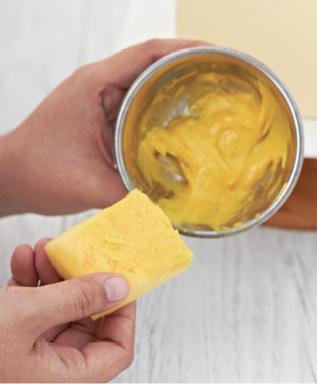
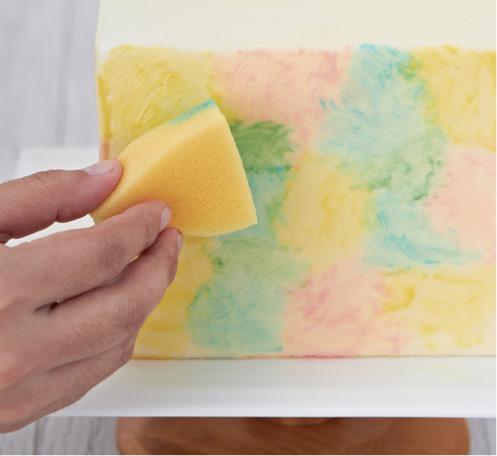
B
C
376
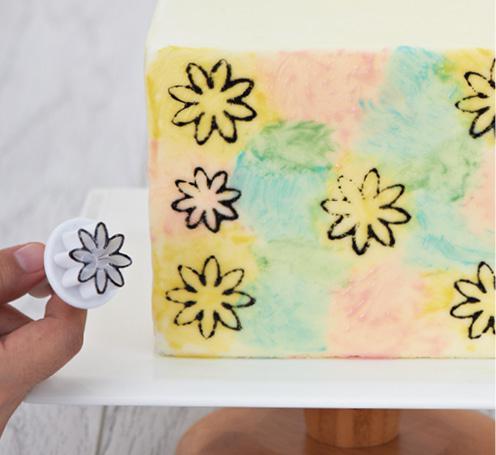
3 Dip your cookie cutter or flower plunger into the
bowl of thinned black or dark buttercream, tap
against the side of the bowl to remove any excess,
and press it gently on the surface of the cake.
Repeat as often as you like (D).
D
4 As a finishing touch you can add embellishments,
for example you can match some coloured edible
pearls to the colours of the patches and apply them
by piping a small dot in the right colour and adding
on a pearl using tweezers to the centre of each
flower stamp (E).
377
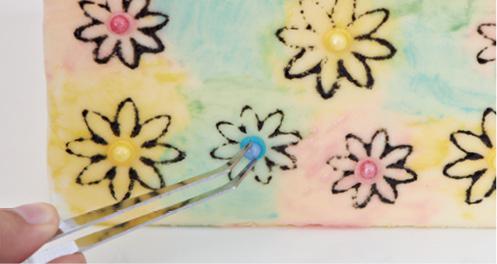
E
Tip
With this technique use white or plain
buttercream to cover your cake. When
applying the patches, you will only use a
minimal amount of light tinted buttercream, so
you need a light background for them to stand
out. It is also helpful if your cake is chilled so
the surface does not dent when patted.
378
